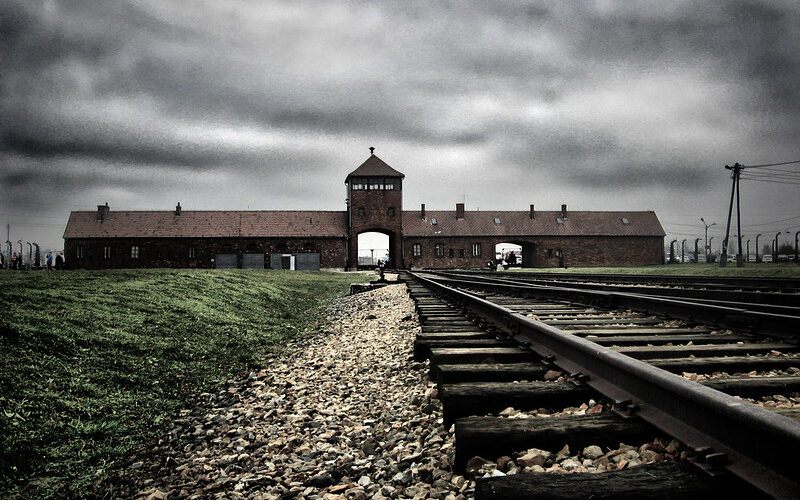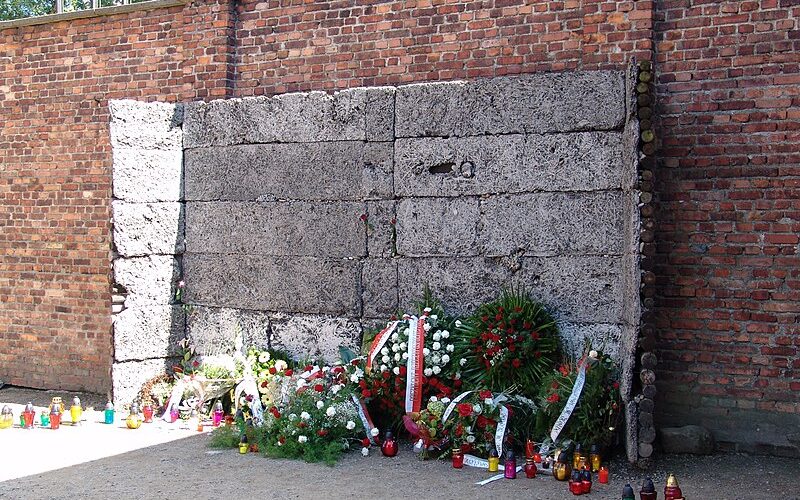
At any time, a trip to Auschwitz-Birkenau is a powerful and thought-provoking experience, but in the current climate, the lessons it can teach are more important than ever.
Ancient hatreds are bubbling up across the world, utilised and weaponised by those populist politicians who seek to divide and not unite. In Germany, the far-right AfD party, members of which recently met neo-Nazis to discuss the mass deportation of ‘unassimilated’ foreign-born German citizens, has been steadily gaining support for years. In the Netherlands, a politician who has expressed desires to ban the Qur’an and close down mosques, achieved electoral victory in November. And since October 7th there has been a huge spike in antisemitic incidents across the world. London alone has seen reported incidents rise 1,350%.
Read no false equivalences here – the crimes of the Nazis are beyond comparison. Yet Auschwitz remains a warning flare – the most extreme potential endpoint of a society prone to the demonisation and dehumanisation of its minority groups.
Auschwitz remains a warning flare – the most extreme potential endpoint of a society prone to the demonisation and dehumanisation of its minority groups
On a recent trip to Krakow with the History Society, we spent a day visiting the camps.
We began at Birkenau, the second site of the wider Auschwitz camp complex, and home to that image that has long lingered in the public consciousness, of a foreboding arched gateway spanning train tracks that disappear into the middle distance.
Constructed in October 1941 by Soviet POWs, Birkenau/Auschwitz-II, was the camp where 90% of the complex’s executions took place. It was the primary ‘killing centre’ of the Third Reich, and over it’s four years of operation approximately 1 million people met their demise within its electrified barbed wire fences.
Walking down the central tracks, on the left I soon came across the selection hut, where Nazi officials would decide whether camp arrivals were to be sent to work, or to the gas chambers. Anyone deemed unfit to work, primarily children, the elderly, the disabled and the pregnant, was immediately taken to the ‘showers’, and would never see sunlight again.
Despite the relative historical recency of the architecture, much of what I came across at Birkenau lay in crumbled ruins. The scarred remains of the gas chambers and the accommodation exist as an epitaph to the final act of Nazi cowardice, as, in the face of an imminent arrival of the Allies, camp officials resorted to dynamite and sledgehammers to try and destroy the evidence of their crimes before fleeing.
A short coach drive took us to Auschwitz-I, which is much more a museum, and one that adds much-needed human texture to the somewhat unfathomable statistics.
Passing through the iconic gates displaying the message Arbeit Macht Frei (Work Sets You Free), former accommodation blocks stretch out to your left and right, housing separate exhibitions for different victims of the Holocaust – Jews, but also the often forgotten casualties such as Soviet POWs and the Roma and Sinti peoples.

(Image: xiquinhosilva via Wikimedia Commons)
The content of these exhibitions is harrowing in the truest sense of the word – from the countless stories and pictures of naked, half-starved kids to the remaining physical possessions of the deceased – mountains of discarded eyeglasses and boots, and even human hair.
In the yard outside Block 11, I found the ‘Death Wall‘, the memorial reconstruction of the wall against which thousands of prisoners were executed by the SS, with a shot from a small-bore pistol to the base of the skull.

(Image: Grippenn via Wikimedia Commons)
I am not, and have never been a superstitious person, but walking through both camps it was impossible not to feel the death in the walls, in the ground, and nowhere is this more apparent than in the gas chambers and incinerators themselves. The knowledge that you are standing in a room where thousands of innocent men, women and children took their final breath, is not left at the exit with your audio guide.
My recent visit was not the first time I have been to Auschwitz-Birkenau – my previous trip was in 2019. What struck me both times was a disconcerting realisation of how truly recently these atrocities took place. Visiting the camps, I felt an internal tension between two understandings of what lay in front of me. The medieval nature of the barbarity and the warped pseudoscientific understandings of race seemed centuries away from the contemporary world, yet I was also seeing the distinctly modern approach that the Nazis took to human extermination, from the brutally efficient and bureaucratised prisoner transports to the industrial use of Zyklon-B.
These horrors occurred in living memory. I thought of my grandfathers, one of whom was born as the Holocaust was just beginning, one of whom was born before Hitler had even invaded Poland. This past is not so far away, and in the context of an increasingly hateful global climate, we would do well not to forget that.


